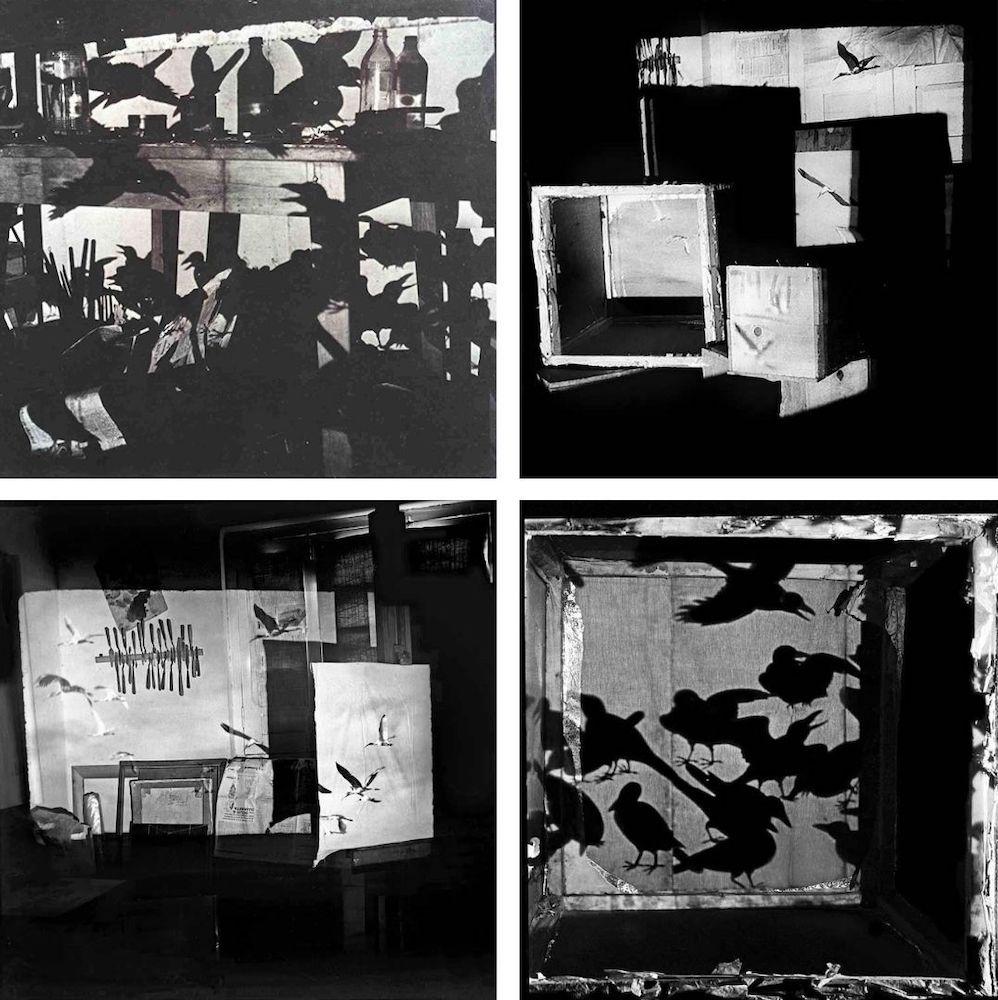Birds in My Studio: Krishen Khanna’s Photographic Experiments
.jpg)
Installation view of the series “Birds in My Studio” as part of Counter-Canon, Counter-Culture: Alternative Histories of Indian Art, curated by Nancy Adajania for the Serendipity Arts Festival. On display alongside are photomurals based on photographs taken by Khanna and Madan Mahatta of the Indian Pavilion at Expo ’70, Osaka. (Goa, 2019. Image courtesy of Phillipe Calia and Sunil Thakkar.)
Krishen Khanna’s photographic practice was taken up to complement his holistic approach to the art of image-making. We may even call it a part of the photographic turn, embraced by Indian artists looking to incorporate the conceptual force of moving and still images, captured by cheap to expensive industrial standard cameras, in their practice. For Khanna, it added yet another layer to his method, as he frequently photographed multiple projections and created photo-murals and montages. Picking up on a variety of influences—from Japanese ink drawings to the burgeoning locations of India’s industrial landscapes of development—the photographs converge into an ironic reflection on his own method and preference for the composite image.
In his more recognised work as a painter, Khanna was attached to (and sometimes criticised for) his figurative explorations. However, when he used the camera, he attempted to obscure the figure, disperse it and even crack it up at the seams—as if suggesting the difficulty of envisioning an image of the self for the postcolonial, non-aligned artist, caught between the singularly worlded imaginations of the West and the East. It was not a departure as much as another way of engaging with the demands of this emergent figure. Thus, in the photograph he made of his friend and fellow-painter, Bal Chhabda, visibly nursing a headache, we see his image through a shimmer of brickwork that ironically imitates the grid-worked logic of abstraction. The tension created between the abstract patterning of the bricks and the head of the fellow artist in pain leads toward an experimental conception of the figure on camera—casting the image of a creative body in an architectural language of construction and vulnerability.

The brooding presence of the crows in Khanna’s studio were meant to signal the impossibility of new departures without a frank confrontation with death and decay. (Image courtesy of the Vadehra Art Gallery.)
His most remarkable series, however, was probably the photographs he made of densely cross-hatched images of crows spilling across the sky and into his studio. Captured on a slow reel Hasselblad camera at his Jungpura studio in the late 1960s, these were titled “Birds in my Studio.” He was responding to an old Japanese artwork—a slide of a screen with painted crows; and the mythology of the bird itself, which represented an obsession with death, carrion and the decay of modern life. Studio equipment is visibly present in these images too—dramatising the artist’s encounter with his subject as if he were casting himself in the role of the persecuted Tippi Hedren in The Birds.

Installation view of the series “Birds in My Studio” as part of Counter-Canon, Counter-Culture: Alternative Histories of Indian Art, curated by Nancy Adajania for the Serendipity Arts Festival. (Goa, 2019. Image courtesy of Philippe Calia and Sunil Thakkar.)
The series also represents a conflict over organising the image. The crows may invite the reading of an excessive agent, resisting the linear framing of Khanna’s camera. However, they also foreground the inherent organisation of their communal presence—as if they were arrayed on a wire; a mysterious but everyday sight in India that is visible to the ordinary person in the streets. Between these two modes of (dis)organisation, hangs a dark but muted allegorical tale, promising an elusive epiphany like in the Sufi poem, A Conference of the Birds. The idea of the composite image—which provided a starting point for Khanna’s investigation of photographic methods—is thoroughly deconstructed by these brooding images of death-becoming-creation.
To read more about how this series was made, and the context of the new show Counter-Canon, Counter-Culture curated by Nancy Adajania, click here.
All works by Krishen Khanna.




